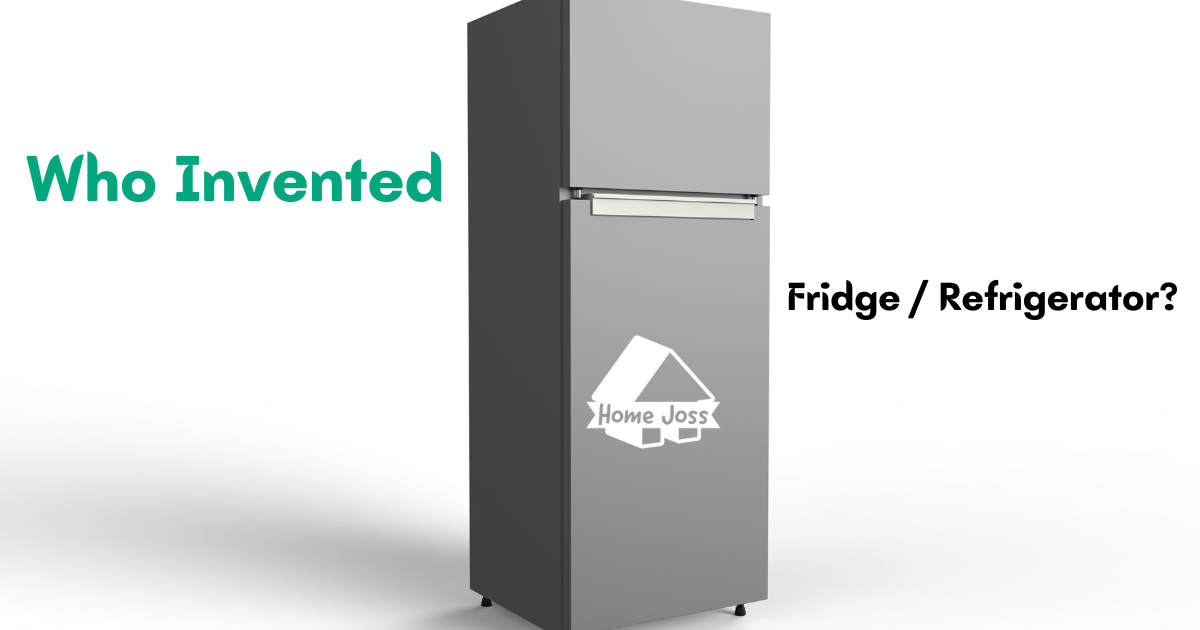The modern refrigerator was invented by American inventor Jacob Perkins in 1834. His design used a vapor-compression cycle to cool the air, a fundamental technology still used in refrigeration today. The first home electric refrigerator was invented by Fred W. Wolf of Fort Wayne, Indiana back in 1913.

Invention of the Refrigerator
The refrigerator, an essential appliance in homes worldwide, has a fascinating history that dates back to the early 19th century. Its invention and subsequent evolution have significantly impacted food storage and preservation, changing the way we live and eat.
Before the invention of the refrigerator, people used various methods to preserve food, such as icehouses and salting. However, these methods had limitations, leading to the quest for more efficient and reliable means of refrigeration.
In the early 1800s, several scientists and inventors experimented with cooling technologies. Notably, in 1805, Oliver Evans, an American inventor, created the first refrigeration machine, which uniquely utilized vapor instead of liquid.
It was Jacob Perkins, an American living in Great Britain, who made a breakthrough in 1834. Perkins built the first practical refrigerating machine using ether in a vapor-compression cycle. This invention laid the foundation for modern refrigeration technology.
Who was Jacob Perkins?
Jacob Perkins, often referred to as the “father of the refrigerator,” was a prolific inventor with a keen interest in mechanics and engineering. His refrigeration machine worked by compressing ether into a liquid, cooling it in a condenser, and then allowing it to evaporate, absorbing heat from the surrounding area.
This process effectively lowered the temperature inside the machine, creating a controlled, cool environment suitable for storing food.
Perkins’ invention was initially intended for industrial use, particularly in the brewing and meat-packing industries. However, it paved the way for the development of domestic refrigerators.
From Iceboxes to Electric Refrigerators
In the late 19th and early 20th centuries, the refrigeration industry saw significant advancements. The icebox, a non-mechanical refrigerator, became popular in households. These were essentially insulated boxes filled with ice to keep food cold.
The inconvenience of regularly replenishing the ice and the advent of electricity led to the development of electric refrigerators.
In 1913, Fred W. Wolf of Fort Wayne, Indiana, introduced the first electric household refrigerator, the “Domelre” (Domestic Electric Refrigerator). This early model was a small unit mounted on top of an icebox. Following this, Frigidaire, a brand owned by General Motors, started mass-producing electric refrigerators for domestic use in the 1920s.
Throughout the 20th century, refrigerators continued to evolve. The introduction of Freon in the 1930s by Thomas Midgley Jr. and Charles Franklin Kettering marked a significant advancement in refrigeration technology. Freon, a safer and more efficient refrigerant than its predecessors, became the standard for refrigerators.
By the late 20th century, it was discovered that Freon and similar chlorofluorocarbons (CFCs) were harmful to the ozone layer. This led to the development of more environmentally friendly refrigerants and the gradual phasing out of CFCs.
Today’s refrigerators are highly efficient, feature-rich, and environmentally friendly. They come in various sizes and styles, with features like frost-free operation, ice makers, and smart technology.
The refrigerator’s journey from Jacob Perkins’ early vapor-compression machine to the modern, high-tech appliances we use today is a testament to human ingenuity and the relentless pursuit of improvement.
This invention has not only revolutionized food storage but has also played a crucial role in improving our quality of life. As technology continues to advance, the refrigerator will undoubtedly evolve, becoming even more efficient and integral to our daily lives.






